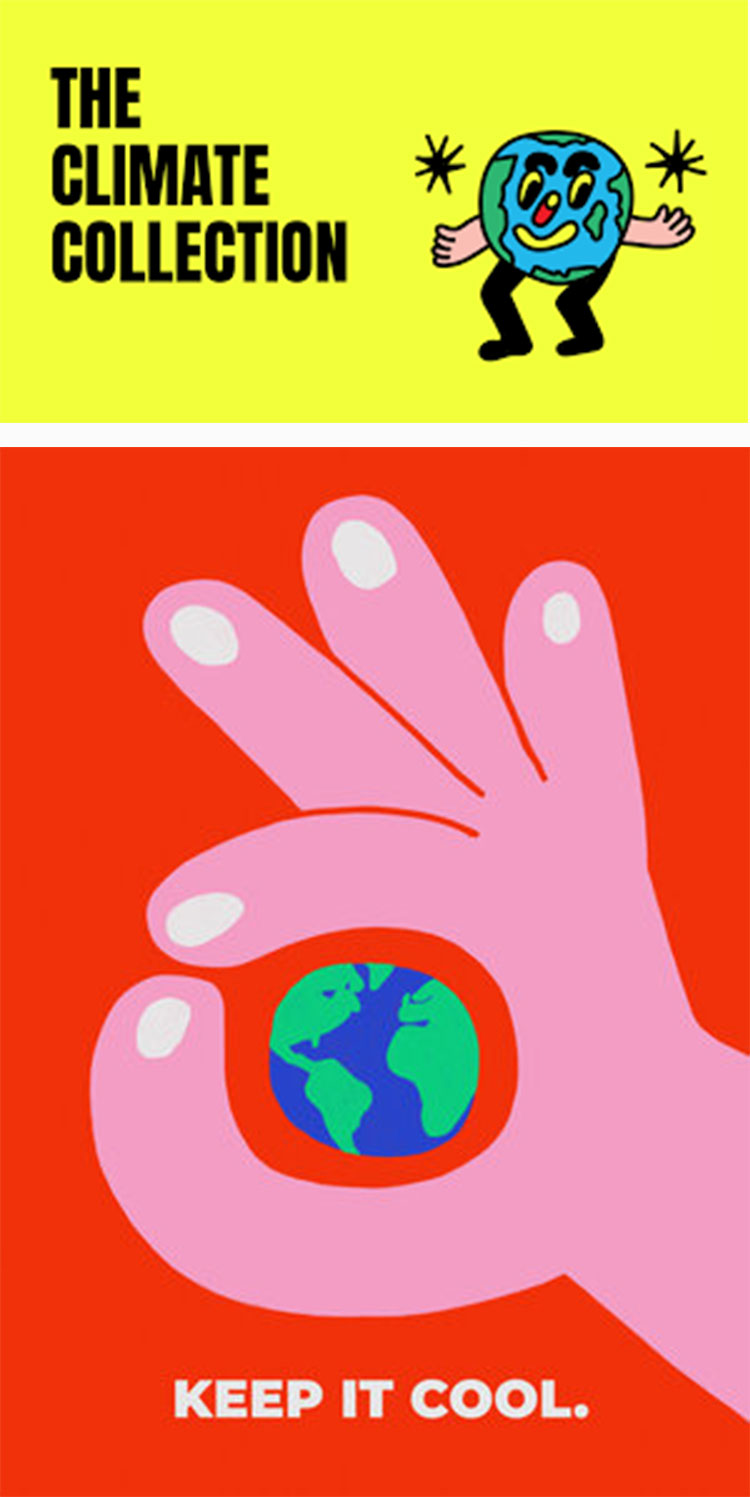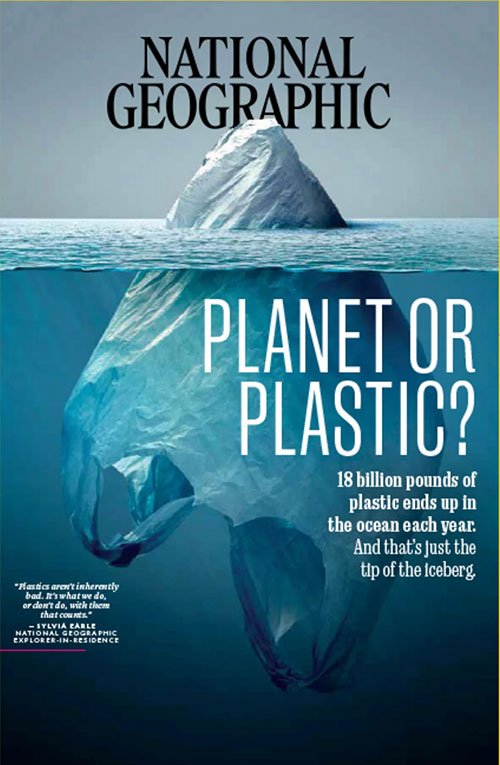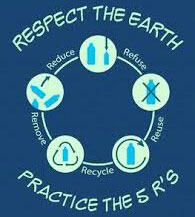From the bulletin – “In today’s worship, we are observing the Feast Day of St Francis of Assisi. The commentary on St Francis in Holy Women, Holy Men says that “of all the saints, Francis is the most popular and admired, but probably the least imitated; few have attained to his total identification with the poverty and suffering of Christ.” The readings are those appointed for this day in Holy Women, Holy Men. The opening hymn, “All creatures of our God and King” and the prayer, “Lord, make us instruments of your peace” are texts attributed to St Francis.”
Season of Creation
A Rogation Treat – OnBeing interview with author Robin Wall Kimmerer.

She is the author of the Braiding Sweetgrass. From Bookshop.org “As a member of the Citizen Potawatomi Nation, she embraces the notion that plants and animals are our oldest teachers. In Braiding Sweetgrass, Kimmerer brings these two lenses of knowledge together to take us on “a journey that is every bit as mythic as it is scientific, as sacred as it is historical, as clever as it is wise” (Elizabeth Gilbert).
“Drawing on her life as an indigenous scientist, and as a woman, Kimmerer shows how other living beings–asters and goldenrod, strawberries and squash, salamanders, algae, and sweetgrass–offer us gifts and lessons, even if we’ve forgotten how to hear their voices. In reflections that range from the creation of Turtle Island to the forces that threaten its flourishing today, she circles toward a central argument: that the awakening of ecological consciousness requires the acknowledgment and celebration of our reciprocal relationship with the rest of the living world. For only when we can hear the languages of other beings will we be capable of understanding the generosity of the earth, and learn to give our own gifts in return. “
Artists for Climate

Just in time for Rogation Sunday!
In 2021, TED Countdown launched a partnership with Fine Acts – a global creative studio for social impact – to kick off a series of SPRINTS, creative boot camps held at TEDx events worldwide.
The goal: Engage artists to envision a better future. In three years, this extraordinary collaboration has produced hundreds of inspiring works for The Climate Collection – a unique vault of open-license visuals.
They are here
Earth Day 2024

Earth Day originated in 1970 after Sen. Gaylord Nelson from Wisconsin witnessed the ravages of the 1969 massive oil spill in Santa Barbara, California. He hoped it would force environmental protection onto the national political agenda. It did lead to the creation of the Environmental Protection Agency, the passage of the Clean Air Act and a dialogue on a host of issues. In our time it focuses on climate change
The theme in 2024 is “Planet vs. Plastics”. The organizing arm earthday.org has the main goal of a 60% reduction in the production of plastics by 2040.
To achieve a 60% reduction by 2040, earthday.org goals are: (1) promoting widespread public awareness of the damage done by plastic (2) rapidly phasing out all single use plastics by 2030 and achieving this phase out commitment in the United Nations Treaty on Plastic Pollution in 2024 (3) demanding policies ending the vast amount of plastic the fashion industry produces and uses (4) investing in technologies to build a plastics-free world.
Plastics are a threat to human health. As plastics break down into microplastics, they release toxic chemicals into our food and water sources and circulate through the air we breathe.
Scientists have found microplastics — or their tinier cousins, nanoplastics — embedded in the human placenta, in blood, in the heart and in the liver and bowels. Plastics can also carry other chemicals not involved in their production: “hitchhikers” absorbed onto plastics and later potentially released into the human body.
The chemicals in plastics have been linked to a variety of issues, including reproductive harm and obesity, organ problems, and developmental delays in children. Ingesting these plastics causes cell damage, which could lead to inflammation and allergic reactions, and once consumed, removing microplastics from your body is not an easy process.
Plastics surround us with the use of plastic bags, plastic containers, packaging materials and garments. (70% from crude oil releasing microfibers ). The small fragments linger for centuries. Animals die from our distribution of plastics
Cigarette butts (whose filters contain tiny plastic fibers), food wrappers, plastic bottles, plastic bottle caps, plastic grocery bags, plastic straws and plastic stirrers are among the most common pollutants.
In 1950, the world produced 2 million metric tons of plastic; in 2019, that number had grown to a staggering 460 million tons. And when that plastic breaks down, it splits into tinier and tinier pieces that can slide more easily into the human body.
Plastics can take anywhere from 20 to 500 years to decompose, depending on the material’s structure and environmental factors such as sunlight exposure.
Less than 14% of plastic packaging is recycled. With plastics being composed of several different polymer types, it is nearly impossible to recycle different plastics together as they melt at different temperatures.
Additionally, to be recycled properly, plastics need to be separated. This is not only time consuming, but costly.
Links
1. Disposable plastics
2. Single use plastics
3. Ocean plastics
4. Microplastics
5. Threat to human health
Take action
1. Sign the Global Plastic Treaty
2. Educate yourself on plastics
3. Reject fast fashion
4. Take a Plastic Quiz
Manage Your Plastic Use
 Individually we cannot change industries or policies but we can make manageable changes in our lifestyles to counter the threats.
Individually we cannot change industries or policies but we can make manageable changes in our lifestyles to counter the threats.
Earthday.org calls these the 5R’s- Reduce, Refuse, Reuse, Recycle and Remove
1. Reduce – Before you shop…
Ask yourself two questions when considering plastic products or products with plastic packaging – Do I need it? Can I use something else?
2. Refuse – Say “no” to plastics
The substitutes for plastics are the ones you choose which can make a contribution to the environment.
Some key tips
A. Avoid plastic straws – use metal or wood/paper based straws.
B. Use reusable shopping bags. And buy cloth or mesh bags to carry fresh produce to the cashier.
C. Select products without plastic packaging.
D. Note products that use plastic microfibers – such as nylon and polyester
E. Bring your own coffee cup to the coffee shop.
3. Reuse – Avoid single-use plastics
Use dishes, glasses, and metal silverware instead of their plastic counterparts.
Avoid plastic items going to the dump – When you finally decide to get rid of old clothes, toys, furniture, or electronics, donate them rather than throwing them away.
For young parents -Trying washable reusable cloth diapers instead of disposable ones.
Any food containers from restaurants are durable enough to be reused for kitchen storage. Make sure to wash them by hand—putting them in the dishwasher can expose you to toxins.
4. Recycle -Know your waste management company/county. This is not the best choice when dealing with plastics. It cannot replace the need for reducing consumption or refusing and reusing plastics when you can.
If you have to throw away something, segregate it and give it a chance to be recycled!. If recycling is the best option, you should do so following the rules of your community.
For Caroline county -Eric Johnson is the Solid Waste Superintendent email – ejohnson@co.caroline.va.us or phone number (804)572-6301.
For the most part, only recycle if you are positive that the item is truly recyclable.
5. Remove – “Get it outta here!
Plastic/litter clean-ups are great community events that let you meet the people who live around you while cleaning up your local community at the same time.
I try to take an hour or two to walk different paths in the neighborhood to pick up trash. The walking and stretching are good exercises and help the community at the same time.
Biodegradable plastics have emerged as a potential solution and are made from natural sources like plant-based materials and micro-organisms such as bacteria that can be used in a variety of industries such as packaging, construction, and healthcare.
Parish Creation Care Committee – Additional ideas for Earth Day
From the Diocese of Connecticut, April 12, 2024
1. Purchase silicone containers as a substitute for plastic containers from restaurants for takeout
From St. Peter’s, Cheshire, CT
A Campaign to Minimize Single-Use Plastic and Food Waste -Contain&Sustain* was awarded *The Jack Spaeth Creation Care Environmental Grant* through ECCT and gained additional financial support from St. Peter’s ECW fund. In late July we launched a matching grant community crowdfunding campaign through Sustainable CT that ended Sept. 2.We reached our $3,000 donation goal and earned the 1.5 dollar-for-dollar match to equal $7,633.30!**
These funds purchased 1700 compact, reusable silicone take-away food containers, which we are distributing FREE to community members. Our goal is to build awareness of food waste AND the waste caused by single-use plastic/styrofoam carry-out containers AND to change behavior to minimize their use in Cheshire
2. Use sneaker collection Highland Elementary, is doing a sneaker recycling drive for Earth Day. Used sneakers will be collected and sent to a company that recycles them and keeps them out of landfills.

Blessing of the Animals – Oct. 4, 2013 – 10 years ago
Friday, Oct. 4, 2013 (full size gallery)
Oct 4 is the day set aside to remember St. Francis with his respect toward nature and his example of living the life of Christ in abject poverty. Traditionally it is the day for the Blessing of the Animals worldside.
Every Blessing of the Animals is different. We had 8 dogs with 17 people – the same number of animals as in 2012 but this blessing was characterized by the number of children which contrasted nicely with last year’s more subdued gathering. It was definitely livelier on an unseasonably warm day for this year However, one thing is constant – Elizabeth Heimbach’s mouse treats. They’re worth coming out for even without an animal.
After an opening by Catherine on the life of St. Francis ( the prayer of St. Francis ), we used this service . First is a part where we comfort the animals and then the priest goes around and blesses each individually.
The animals seemed to enjoy the day and the Fishers got Jackie, a newcomer this year, to perform for us. And then the children performed with hoola hoops!
The extensive yard of St. Peter’s gets a workout on this day. There is something magical between children and animals and the pictures try to capture some of that. Nature cooperated with a blanket of sunlight through the early evening.
Newsletter, October, 2023
Click here to view in a new window.
Season of Creation, 2023 – Some Positives
The bottom line is that there have been some improvements since the last time we did Season of Creation. The increase in emissions has been reduced. People and enterprises are taking this subject seriously The need for reduction in emissions has been addressed by countries, companies and many levels of government
At the moment we’re heading for a temperature rise of 2.7 celsius by the end of the century assuming countries make good on their promises. Progress in reducing emissions doesn’t mean we can relax time is running out if we’re to avoid the worst effects of climate change. 2.7 is much worse than 1.1 now and the 1.5 goal made in 2015 in Paris.
Our goal is a Net Zero position by 2050. Net zero refers to the balance between the amount of greenhouse gas (GHG) that’s produced and the amount that’s removed from the atmosphere. We have a long way to go by 2050 to get to our goals where we are balanced – Net Zero.
1 The rate of increase in emissions has slowed somewhat since 2005
From C2es.org “ We estimate that U.S. net greenhouse emissions are now 17 percent below 2005 levels in 2021. Electric power sector emissions have fallen nearly 36 percent (2005 – 2021) as a result of a shift from coal to natural gas, increased use of renewable energy and leveling of electricity demand Transportation sector emissions fell almost 9 percent, while industrial sector emissions fell by a little more than 4 percent over the same period.”
Along the way, the US will achieve a 29-42% reduction in GHGs in 2030—a meaningful departure from previous years’ expectations for the US emissions trajectory but not enough for the US to meet its pledge under the Paris Agreement to reduce emissions by 50-52% below 2005 levels by 2030.
In the real world, global coal use has been flat, if not slightly declining since 2014.
Clean energy costs have fallen dramatically, solar is 90% cheaper in the last decade. Wind is 66% cheaper, batteries are 90% cheaper. Electric vehicles are about 14% of new vehicle sales globally now, and upwards of 20% in places like China and Europe
Some global issues such as deforestation is looking better in the US. Deforestation? Actually the size of America’s forests has been basically stable since 1910 – Despite the fact that the country’s population has tripled since then. Wildlife extinctions? 99% of the species placed under the protection of the Endangered Species Act have been saved, though there’s still more work to do to get them off the endangered species list entirely. Climate change?
2. 45 countries in the world including the United States the UK and most western democracies are in fact cutting their emissions or are planning to do so
US 100 percent clean power by 2035 and slashing 2005 climate pollution levels in half by 2030. America has actually cut its total amount of carbon emissions more than any other country in recent years.
As of 2022, about 75% of global emissions are covered by countries that have committed, at least on paper, to get to net zero emissions by the middle to late 21st century, and that includes countries like China and India, Japan, South Korea, Brazil, as well as of course, the U.S., the EU, and others.
America’s air quality has dramatically improved in recent decades. Since 1980, carbon monoxide emissions decreased 75%, lead went down 99%, nitrogen oxides went down 72%, and sulfur dioxide went down by 93%. The result: air so much cleaner that research suggests it may have actually extended our life expectancy.
3. Disclosures from companies
In March,2022 the Securities and Exchange Commission (SEC) released a statement outlining proposed rules that would require publicly-held companies to provide climate risk data and greenhouse gas emissions to regulators and investors. Companies would also be responsible for reporting annually on progress toward their targets
Example – Alphabet (Google)
Alphabet is the world’s largest corporate buyer of renewable energy, which includes
more than 50 projects totaling 5.5 GW of renewable energy projects under contract
worldwide. This accounts for an annual deficit of approximately five million tons of
carbon dioxide in the atmosphere. By 2030, Alphabet plans to become the first major company to operate full-time on carbon-free energy. It plans to do so by continuing to invest in renewable energy generation and storage technologies that can also benefit other businesses
4. Virginia
Virginia Clean Economy Act, mandates that Dominion Energy, switch to renewable energy by 2045. Appalachian Power, which serves southwest Virginia, must go carbon-free by 2050.
Almost all the state’s coal plants will have to shut down by the end of 2024 under the new law.
Fredericksburg – In 2019, City Council passed the 100% Renewable Energy Resolution, which committed the City of Fredericksburg to have 100% renewable energy power municipal operations by 2035
5. Climate change is being included in budgets. You need to allocate resources
The Oslo Norway Climate Budget, was put forward for the first time in 2016. A climate budget is a governance tool. It structures and organizes how we can get from climate target policies and words to action and results. It also makes all parts of the administration in Oslo a stakeholder to the climate goals. Our climate budget, which is measured in tons of CO2 emissions, is fully integrated in the municipal budget.
6. Consultants
Climate Ready America is a proposal for a nationwide system of climate support services to help communities do their part to address climate change. It creates a civic infrastructure that will partner with the federal government to leverage and support the climate mitigation and adaptation programs of federal agencies and other organizations, helping those tools reach the ground.
Project Drawdown – Drawdown refers to the future point in time when levels of greenhouse gas concentrations in the atmosphere stop climbing and starts to decline. This is also a company in San Francisco. Central to the project is the compilation of a list of the “most substantive solutions to global warming.” The list of 100, which encompasses only technologically viable existing solutions, was compiled by a team of more than 200 scholars, scientists, policymakers, business leaders, and activists and is now online.
7. Laws
Inflation Reduction Act – The IRA directs nearly $400 billion in federal funding to clean energy, with the goal of substantially lowering the nation’s carbon emissions by the end of this decade.1 The funds will be delivered through a mix of tax incentives, grants, and loan guarantees. Clean electricity and transmission command the biggest slice, followed by clean transportation, including electric-vehicle (EV) incentives. It could lower U.S greenhouse gas emissions from 30 to 40 percent by 2030
8. Human adaptation to climate change. At the current rate of warming, human adaptation has actually been working out pretty well so far. In fact, according to WMO, over the last 50 years, the number of disasters globally has increased by around 400%, while the number of deaths has fallen by two thirds.
Concluding the Season of Creation – Prayers for the Earth
Based on the Fifth Mark of Mission

To Strive
God, creator of the universe,
Fill us with your love for the creation,
for the natural world around us,
for the earth from which we come
and to which we will return.
Awake in us energy to work for your world;
let us never fall into complacency, ignorance,
or being overwhelmed by the task before us.
Help us to restore, remake, renew. Amen
Season of Creation 2023 – a retrospective

The image shows the challenges and work to improve the environment in the darker areas with the light areas, the work we are doing now and a promise for the future.
We did fewer projects and concentrated on the beauty of creation and the need for renewal. The Season of Creation was present in these areas:
- Five Sundays readings in the Season of Creation and highlighted a specific environmental area which we covered weekly.- Earth, water, energy, food (waste), deforestation. Link
- We began a new Christian Ed for Children ages 5-9 and they covered water
- The services during the month had the following different sections
Season of Creation – Forests (Deforestation)
This week we look at ground level to consider deforestation
Deforestation
Forests in our memories – From Michelle Cook, Intergen. “How do you think of forests? In your imagination are they places of peace and quiet? Are they places that scare you? Are you more at home in a eucalypt forest than in a mangrove forest? Sometimes forests can be places of fear. Think of all the old stories from Europe, the folk tales some of us may have grown up hearing. Stories like Hansel and Gretel, where children get lost in the forest. Stories like Snow White, where the beautiful young girl gets taken to the forest by the hunter so that he may kill her far away from witnesses. Forests in these stories are seen as places of secrecy, of unknown dangers and mysterious powers.”
“In Psalm 139 it is our bodies being knit together in our mother’s wombs that becomes known. God, the creator of everything, knows our bodies, and hear the Psalmist says to us that we are fearfully and wonderfully made. Even the workings of the womb, hidden from us, and felt by mothers, are known by God. The story of creation is retold in Genesis 2:4b-22. Adam is created from earth and is set in a garden – a forest of fruit trees – a garden of food. Here is a forest, where again, all is known. The chaos and desperation of the land, where nothing is yet growing, is contrasted with the richness and safety of the garden.”
Climate Change – and you – the big items
- A house with a furnace is like a car that idles all day. Swap your furnace for a heat pump, which works by extracting heat from one location and transferring it to another (Tax Credit : 30% of the cost paid by the consumer, up to $2,000/year,)
- Swap your gas stove for an electric stove, which will also lower indoor air pollution (rebate amount has not been publicized year)
- Install a programmable thermostat model to turn off the heat/air conditioning when you’re not home.
- Get a home or workplace energy audit to identify where you can make the most energy-saving gains. ( Tax credit – 30% of the cost paid by the consumer, up to $150)
- Consider Solar- This is a significant expense but can vary depending on the company you choose.
30% federal tax credit via Inflation reduction act. State – – A property tax exemption for the increase in home value after going solar.
Solar Renewable Energy Certificates (SRECS), which are financial incentives for generating clean electricity. You gain one SREC for every 1,000 kilowatt-hours generated by your solar panels, and you can sell the credits to local electricity providers and other organizations that are subject to renewable energy mandates. As of 2023, each SREC can be sold for around $45 to $70.
Solar alternative – Even if you can’t install solar panels, you can still be a part of the clean-energy economy. Check out – Old Dominion Electric Cooperative (ODEC) odec.com. ODEC has entered several long-term purchase power agreements for energy generated by wind, solar, and landfill gas resources. .
Your home – other
- Unplug computers, TVs and other electronics when you’re not using them
- Turn off lights you’re not using and when you leave the room. Change to energy-efficient LED bulbs
- Wash clothes in cold water. Hang-dry your clothes when you can
- Draft proof.
Drafts waste five to 30 per cent of energy. Those from basements and roofs cool the most. Seal doors, windows and chimneys in those areas first. Try testing with incense. Where the smoke wavers, a draft is blowing in.To seal leaks, make or buy a “door snake” and caulk and weatherstrip doors and windows. Look for non-toxic, eco-friendly caulks. You can also add small insulating covers underneath electric outlet wall plates on outside walls or beside cold basements and crawl spaces. - Insulate windows.
Hang heavy curtains to keep the cold out and the cozy in. A cheaper solution: insulation film, available at most hardware stores. This plastic shrink film is easy to apply and keeps in much of the heat that would otherwise escape. - Reverse ceiling fans.
Many ceiling fans have a reverse mode. When they turn clockwise, they push down warm air that pools near the ceiling and circulates it through the room. - Change furnace filters.
Dirty filters restrict airflow and increase your furnace’s energy demand by making it work harder. Replace filters at least every three months during the heating season.Better indoor air quality is a nice side benefit of this energy-saving tip. Consider switching to a washable filter, which reduces waste and is more effective. - Check your thermostat.
Every degree you turn it down can save between 1.5 and five per cent of your heating bill. A programmable thermostat will help you get efficient and consistent.Turn down the thermostat when you’re sleeping or out. It’s is the most efficient way to reduce your heating bill — and your eco-footprint.
Transportation
Carpooling
- Combine errands to make fewer trips. Remove excess weight from your car. Use cruise control.
Consider electric or hybrid or low carbon vehicle for your next car
Speeding and unnecessary acceleration reduce mileage by up to 33%, waste gas and money, and increase your carbon footprint.
- Properly inflated tires improve your gas mileage by up to 3%. It also helps to use the correct grade of motor oil, and to keep your engine tuned
Fly less and take alternate transportation

